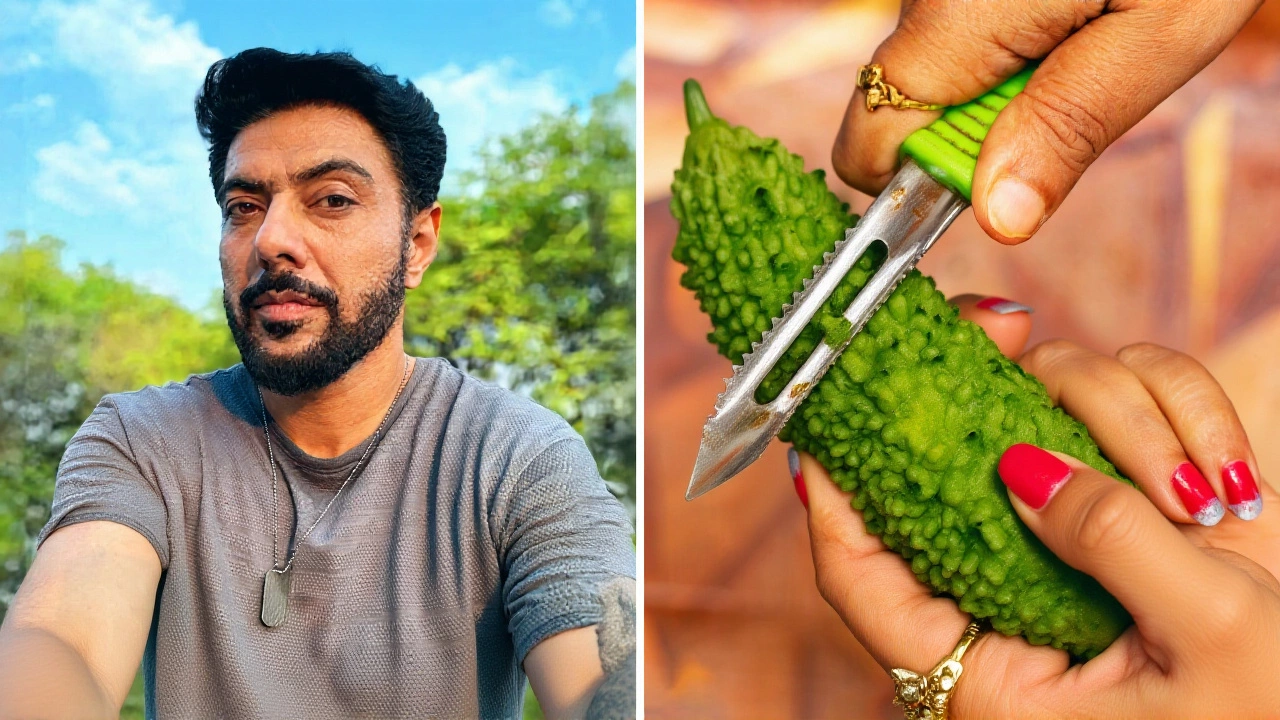Bitter Gourd Peel – Why It Matters and How to Use It
When working with bitter gourd peel, the thin outer layer of the bitter gourd (also called karela) that many people discard. Also known as karela skin, it contains fiber and antioxidants that can boost digestion and lower blood sugar. The parent fruit, bitter gourd, is a staple in Asian kitchens and prized for its sharp flavor. Understanding the nutritional benefits, such as vitamin C, potassium, and bioactive compounds, helps you decide whether to keep or trim the peel.
Peeling Techniques and the Tools You Need
Removing the peel doesn’t have to be a chore. Simple peeling techniques like blanching the whole fruit in hot water for 30 seconds, then shocking it in ice water, makes the skin slip off in large strips. If you prefer dry methods, a sturdy vegetable peeler or a serrated knife works well on firm gourds. Some cooks use a grater to shave the peel into fine ribbons that blend into stir‑fries, preserving texture while reducing bitterness. The choice of tool influences the speed of the job and the final mouthfeel of the dish.
Once the peel is off, you have a range of cooking methods to choose from. Sautéing the sliced gourds with garlic and onions mellows the bitterness, while deep‑frying the peeled pieces creates a crispy snack. In Indian households, the peel often gets added to pickles, soaking in mustard oil and spices for days to develop a tangy, savory profile. Each method leverages the peel’s natural fiber to improve texture without sacrificing flavor.
The health angle is where the peel shines. Research shows that the skin holds a higher concentration of flavonoids compared to the flesh, meaning it can aid in reducing oxidative stress. For people managing diabetes, keeping the peel on during cooking can help blunt the glycemic impact of the fruit. Moreover, the peel’s soluble fiber supports gut health by feeding good bacteria, which in turn boosts overall immunity. Pairing the peel with protein‑rich foods like lentils or tofu balances the meal and makes the bitterness more palatable.
Storage matters, too. If you’ve peeled a batch of gourds and aren’t ready to cook, wrap the strips in a damp cloth and keep them in the fridge for up to two days. For longer keeping, blanch the peeled pieces, dry them thoroughly, and freeze in airtight bags—later you can toss them straight into soups or curries. This preserve‑and‑use approach cuts waste and ensures you always have the nutritional boost of the peel on hand.
Beyond the kitchen, the peel can double as a natural skincare ingredient. Its high water content and antioxidants make it suitable for DIY face masks that soothe irritated skin. Simply grind fresh peel with yogurt and honey, apply for 15 minutes, and rinse for a refreshed complexion. This crossover shows how the bitter gourd peel isn’t just a cooking concern but a versatile element in daily wellness.
In the collection below you’ll find practical guides that walk you through each step: from quick blanch‑and‑peel demos, to hearty recipes like bitter gourd stir‑fry with the skin intact, to tips on storing the peel for future meals. Whether you’re a beginner curious about the basics or an experienced cook looking to squeeze out every ounce of nutrition, the posts are organized to give you clear, actionable insights.
Ready to explore? Dive into the articles ahead and discover how a humble peel can transform flavor, health, and even your beauty routine.

Ranveer Brar’s Bitter Gourd Peel Kadha Boosts Immunity & Glow
Chef Ranveer Brar’s bitter gourd peel kadha promises immunity boost and skin glow during cold weather, backed by MDPI research and fan buzz.